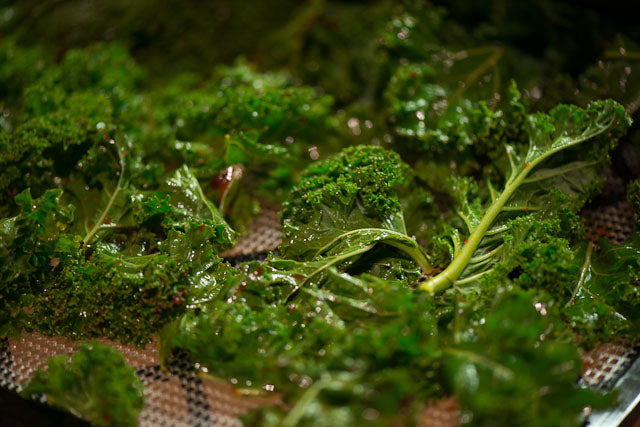Which Food Dehydrator? Our Buying Guide

Food dehydrators are one of the most sought-after kitchen appliances in the UK. Used to dry out a huge range of fruits, vegetables, pulses and even meats, dehydrators are simple to use, cheap to run and allow you to save a lot of money by giving you an alternative to expensive shop-bought products.
If you’re in the market for a food dehydrator, read on to find out more about these machines, how versatile dehydrators are and some of our most recommended products.
What is a food dehydrator?
If you're at the point where you’re wondering what type of food dehydrator to buy, you probably already have a clear idea of what these machines do.
However, for those who still feel in the dark, a food dehydrator does what it says on the tin - it dehydrates food. But not just that. These appliances are also one of the best tools for food preservation. When warm air is pumped into and circulated around the enclosed space, the moisture in fruit and vegetables is removed. This leaves the food dried and preserved. Where once upon a time, orange slices and tomatoes were put in the oven overnight, these machines do the job in a more compact way and using less energy.
What type of food do you put in a food dehydrator?
What food you put in a dehydrator is up to you. The most common choices are sliced citrus fruits, apples, apricots, courgettes, herbs, mushrooms and chillies. You can also dehydrate meat to make beef jerky, or even preserved chicken and turkey for soups, stews and casseroles.
It’s fun to experiment too - try making banana chips or drying out some flowers for decoration. Dry out beans and peas for use later on. Or use leftover vegetables, off-cuts and peelings to make your own stock. A dehydrator has so many uses.

What benefits does a food dehydrator have?
Healthy: The health-conscious among us, as well as many dieticians, recognise the dehydrator as an essential part of healthy eating. Dehydrating maintains the vitamins and minerals in food - much more so than boiling or roasting does. Dehydrated fruit & veg can replace cravings for crisps, sweets and other snacks that get in the way of your healthy eating plan. The Paleo, Atkins and 5:2 diets are primed for food dehydrator use.
Economical: Leftover veg, peelings and ends, meat scraps - if you have anything that would usually head to the food bin, a dehydrator offers a viable option to preserve the food until you’re ready to eat it. This means less waste, lower grocery bills and an extended shelf life for your food.
Taste: Dehydrated food has a more concentrated, richer flavour. So, whether you decide to snack on some courgette chips or grind up dehydrated tomato and carrot skins to make your own stock - a dehydrator is instrumental in creating foods that are better quality and tastier than their shop-bought equivalents.
Food dehydrator recipes
Food dehydrators don’t just come in handy for drying out apple slices and herbs. These appliances have so much functionality and can be used in the cooking and preparation of all types of food.
Yoghurt
After boiling 1pt of milk and leaving to cool, add a yoghurt culture and pop in a dehydrator for around 6-8 hours to get delicious, creamy, rich yoghurt.
Nuts
You may wonder why nuts are mentioned here. Surely they're dried already? True - but there's a lot of sense in soaking nuts before consuming. Inside the nut are enzyme inhibitors that break down when nuts are in water. Once soaked, you can use a dehydrator to get nuts back to their original crunchy state and get the full benefit from their digestive enzymes, too.
Granola
Making granola at home is a fun way to create a delicious, healthy breakfast ahead of schedule. Soak a mixture of oats, seeds and nuts overnight before adding honey (or your sweetener of choice), desiccated coconut, raisins and apple pieces. Leave in the dehydrator overnight and enjoy with milk, soy or almond milk for breakfast.

Kale Crisps
Kale crisps are a great healthy snack, and homemade ones are so much cheaper than shop-bought. Luckily, a food dehydrator is all you need to make the process really simple. Put them in for two to three hours, and sprinkle them with sea salt and nutritional yeast for an easy, tasty and low-fat snack. Fancy something a bit spicier? Check out our chilli kale crisps recipe for crispy kale with a kick!
Beef Jerky
Remember earlier on we said you can use dehydrators to make beef jerky? Slice beef blade steak as thinly as you can - ideally under 1cm thick. Marinade overnight in your choice of spices, then dry in a dehydrator for 6-8 hours. Read our article on how to make beef jerky for more beef jerky tips and some tasty marinade ideas.
Our recommended food dehydrators
6 Tray 'Hendi' Dehydrator
The 6 Tray Hendy Dehydrator is one of the most popular models for both bulk domestic and professional use. The six stainless steel drawers allow you to dry an assortment of foods and comes with a transparent door to allow for easy check-ups. The thermostat can be adjusted from 35°C to 70°C.


